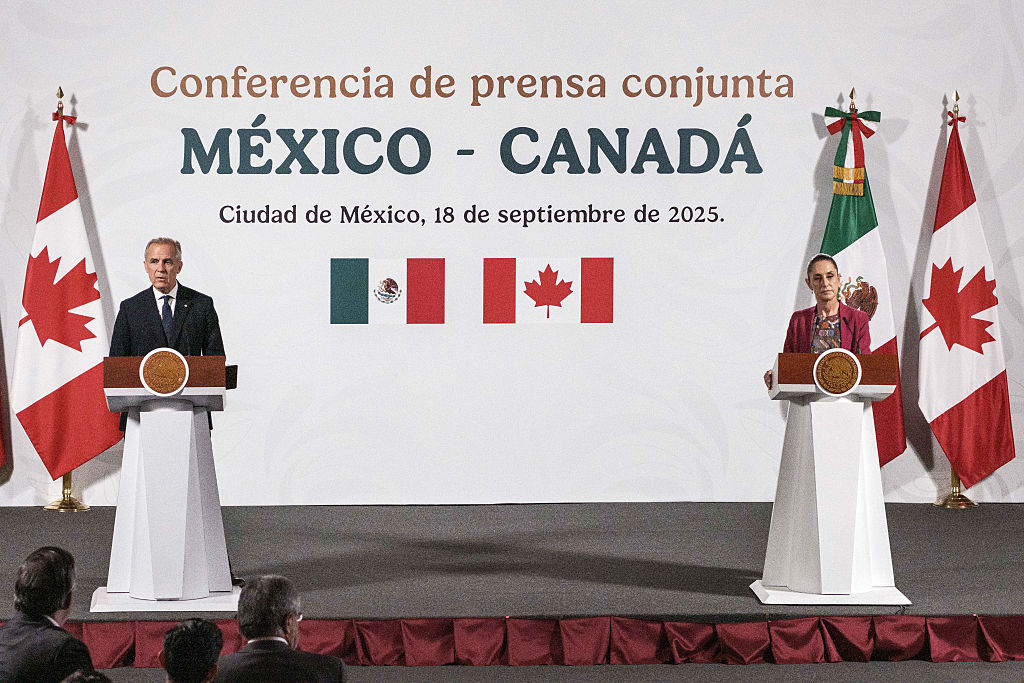Congressional Testimony: U.S. Opportunities and Challenges in the Western Hemisphere's Energy Revolution
Congressional Testimony: U.S. Opportunities and Challenges in the Western Hemisphere's Energy Revolution
Council of the Americas explains the strategic importance of U.S. leadership in developing the hemisphere's numerous energy opportunities.
SUBMISSION FOR THE RECORD
BEFORE THE U.S. HOUSE OF REPRESENTATIVES COMMITTEE ON FOREIGN AFFAIRS
SUBCOMMITTEE ON THE WESTERN HEMISPHERE
MAY 14, 2015
COUNCIL OF THE AMERICAS
Over a short time period, the Western Hemisphere has moved from energy scarcity to abundance. North America, with oil sands in Canada, nascent reforms in Mexico, and a revolution in shale gas enabled by technological advance and infrastructure development, has become a global energy powerhouse. Latin America beyond Mexico is also endowed with significant energy resources. Questions of governance, regulation, infrastructure, and rule of law, however, have proven at times to be a drag on development.
Irrespective of political system or governance, energy is a topic of mutual interest for every hemispheric nation, whether net producers or consumers. The United States is well-positioned to play a broad leadership role from finance, to research and development, to technology transfer, to best environmental practices and community engagement. This is a posture that the Council of the Americas through our long-standing Energy Action Group has actively urged the United States to adopt as a hemispheric priority, both for foreign policy and also commercial purposes.
A number of specific ideas present themselves.
North American Energy Development and Competitiveness
North America is now the most compelling energy story in the hemisphere due to large reserves, existing infrastructure, and potential for further integration including the Keystone XL pipeline. Canada is our top energy supplier and the relationship is both strategic and fully integrated, undergirding the U.S. economy. Full implementation of Mexico’s historic reforms will open a historically-closed sector to U.S. and other country participation, while strengthening Mexican competitiveness by significantly reducing the cost of natural gas, an important feedstock for industry and also a major contributor for power generation. Given Mexico’s interdependence with the United States, increasing competitiveness south of the border will contribute to our own, just as high Canadian competitiveness contributes to ours, and vice versa. Further development of a true North American energy integration strategy offers the possibility of concrete economic, environmental, and strategic benefits to the three nations of North Americas. It should therefore be a top political and foreign policy priority.
Opportunity in Central America and the Caribbean
With only few exceptions, Central American and Caribbean countries maintain unsustainably high energy costs. Venezuela’s Petrocaribe program took advantage of these circumstances to offer low cost energy supplies to the region, meeting commercial needs while bolstering Caracas’ influence. The program has created a large debt overhang while Venezuela’s downward plunge has given observers reason to question whether the program will continue at anything like its previous levels. To address these issues, Vice President Biden has announced the Caribbean Energy Security Initiative, which the Council supports and co-hosted the regional energy security summit in January 2015. These efforts should be complemented by further engagement, especially by the private sector, to catalyze investment in affordable, renewable, and sustainable energy. At the same time, there must be greater urgency paid to these issues both in the Caribbean and Central America, where energy integration efforts have been ongoing—with only limited success—for years. Integration would reduce costs, increase competitiveness, and potentially shift the fuel matrix from dirtier to cleaner, more sustainable fuel sources.
Shale Gas Development in the Western Hemisphere
The technology, capital, and human resource-driven shale gas revolution in the United States has engineered an energy renaissance. Major shale deposits are also present in Mexico. In addition, Argentina, Brazil, and Colombia are blessed with generous shale deposits. Individual market realities, however, have caused these resources to be developed with varied levels of effectiveness. Best practices are primarily found in the United States; we have what others need. As a result, the United States can and should intentionally claim a leadership role in marshalling best practices to initiate a Western Hemisphere Shale Gas Council, which would be composed on a voluntary basis by the United States and Canada as well as the shale gas producing nations of Latin America. Through this body, the United States would have an opportunity to share lessons learned and provide technical assistance and cooperation. Each participating nation could also benefit by exchanging views; over time, other shale producers and consumers including Australia, China, Japan, Singapore, and Spain, among others, could be invited to participate. From a bureaucratic perspective, the U.S. lead would be the top official for energy at the State Department, supported by other relevant agencies such as DOE, EPA, and FERC, with appropriate Congressional oversight.
The Challenge of Energy Infrastructure
While energy resources clearly exist across the region, from oil and gas to coal to alternatives and renewables, years of underinvestment in energy infrastructure have taken a toll on sector development and broader economic competitiveness. Without the necessary pipelines, roads, transmission lines, and other interconnections, neither Latin America nor the Caribbean will be able to reach full energy potential. As a result, energy-related infrastructure can also be a regional priority for U.S. consideration, bilaterally and via broader efforts including the World Bank, IDB, IFC, and other relevant international financial institutions. As the Chinese government has found, investments in regional infrastructure are welcomed because they contribute to regional development while also creating new, significant commercial opportunities for national firms. Yet regional governments frequently complain of a lack of U.S. investor interest in regional infrastructure development, energy, or otherwise. This is a topic for the U.S. government to consider and, to the extent appropriate, support through agencies including OPIC, TDA, and other relevant bodies.
Prioritizing the Region is a Win-Win for the United States
The United States should work with the other countries in the region to advance a positive energy and infrastructure agenda. The energy revolution in the United States has been a boon for U.S. energy security, but this can also be broadened to include the other countries in the hemisphere to the extent they may also be interested. Furthermore, in working more diligently as a priority with others in the hemisphere, the United States can promote cleaner and renewable energy alternatives, in which we enjoy considerable leadership and expertise. Renewable energy promotion is win-win for both the United States and countries in the region due to the immense investment and commercial opportunities and also the positive impact on the region’s already clean carbon footprint. It is an idea which has considerable potential for regional uptake and should be explored as a priority as the United States seeks to develop a broader agenda for hemispheric affairs.








